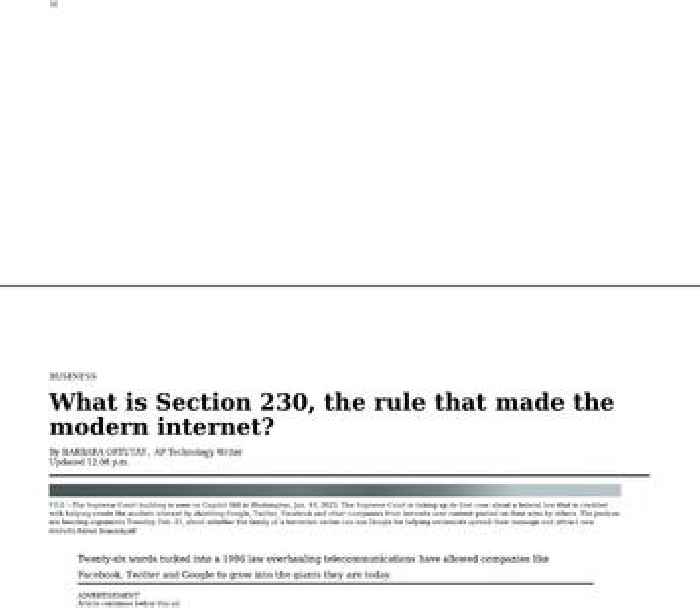
What is Section 230, the rule that made the modern internet?

Twenty-six words tucked into a 1996 law overhauling telecommunications have allowed companies like Facebook, Twitter and Google to grow into the giants they are today.
A case coming before the U.S. Supreme Court this week, Gonzalez v. Google, challenges this law — namely whether tech companies are liable for the material posted on their platforms.
Justices will decide whether the family of an American college student killed in a terror attack in Paris can sue Google, which owns YouTube, over claims that the video platform’s recommendation algorithm helped extremists spread their message.
A second case, Twitter v. Taamneh, also focuses on liability, though on different grounds.
The outcomes of these cases could reshape the internet as we know it. Section 230 won’t be easily dismantled. But if it is, online speech could be drastically transformed.
WHAT IS SECTION 230?
If a news site falsely calls you a swindler, you can sue the publisher for libel. But if someone posts that on Facebook, you can’t sue the company — just the person who posted it.
That’s thanks to Section 230 of the 1996 Communications Decency Act, which states that “no provider or user of an interactive computer service shall be treated as the publisher or speaker of any information provided by another information content provider.”
That legal phrase shields companies that can host trillions of messages from being sued into oblivion by anyone who feels wronged by something someone else has posted — whether their complaint is legitimate or not.
Politicians on both sides of the aisle have argued, for different reasons, that Twitter, Facebook and other social media platforms have abused that protection and should lose their immunity — or at least have to earn it by satisfying requirements set by the...
